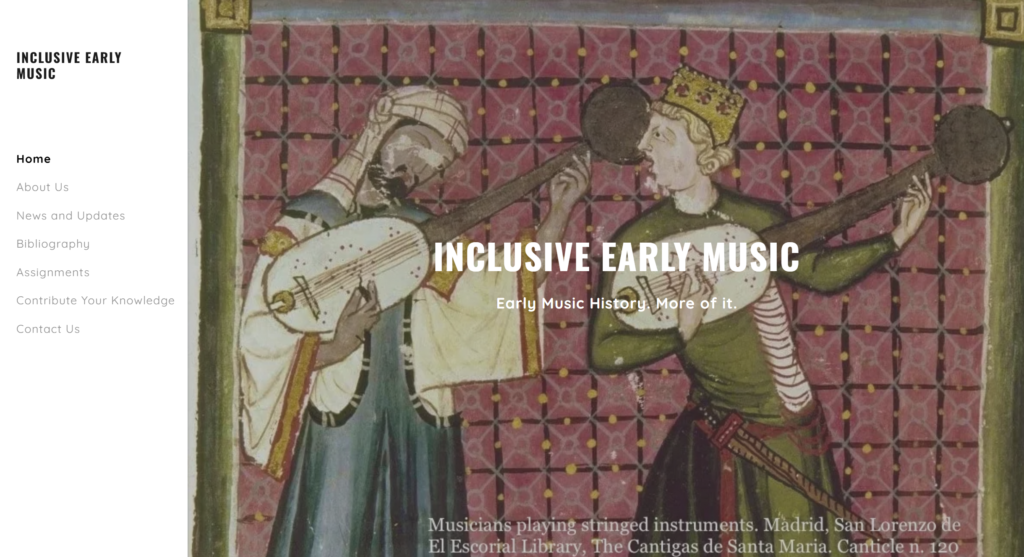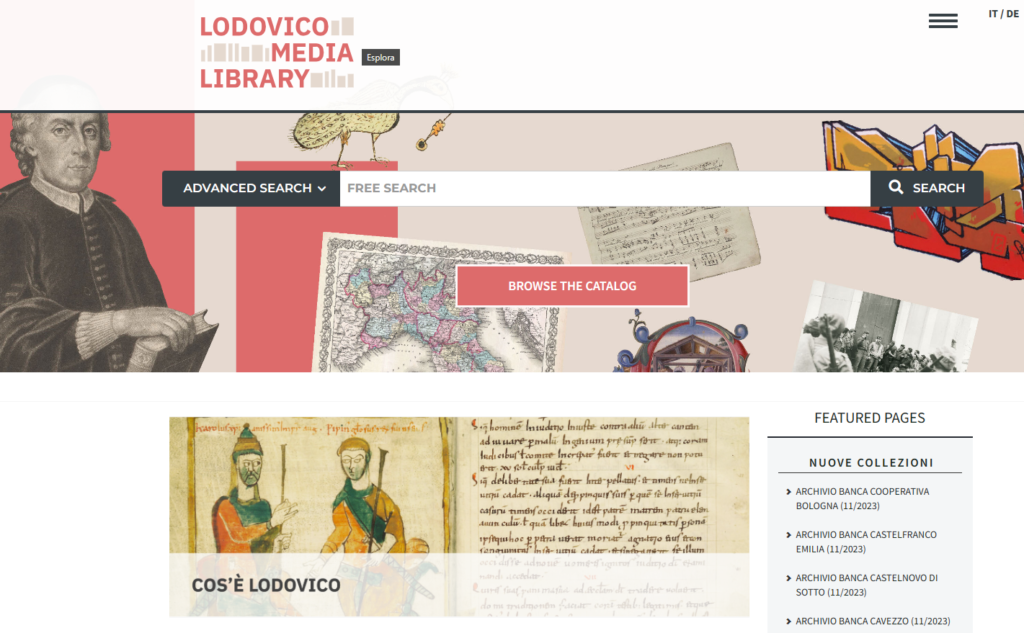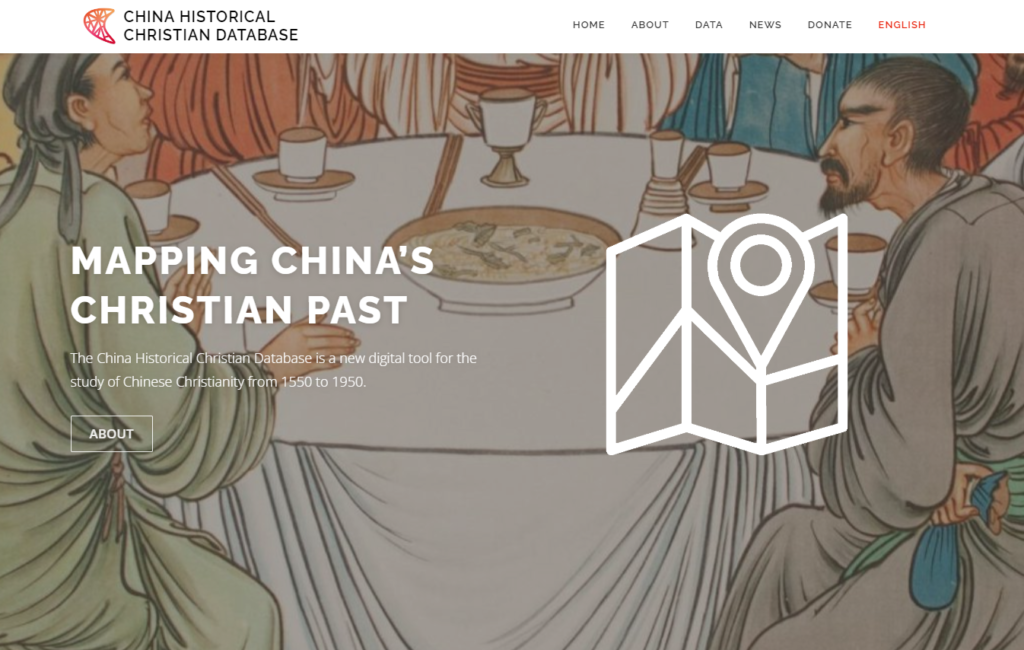
https://inclusiveearlymusic.org/
A crowd-sourced bibliography of articles and books “to introduce students to musical voices and communities and points of contact typically left out of college survey courses.”

https://inclusiveearlymusic.org/
A crowd-sourced bibliography of articles and books “to introduce students to musical voices and communities and points of contact typically left out of college survey courses.”

https://ista.univ-fcomte.fr/omekatest/s/atma-english/page/welcome_ATMA
ATMA is a thematic digital library devoted to the technical works of the Western military tradition (tactics, military architecture, ballistics, etc.) from the 16th to the early 17th century. Its aim is to make these texts accessible and facilitate their consultation and study through a series of online digital tools:
The project, launched in September 2022, is in its initial phase: ATMA currently has 75 digitised texts (3 of which have been OCR’ed and can be searched using lexical terms), 2 author biographies, 1 3D technical illustration, a geographical map and 1 technical glossary.

https://lodovico.medialibrary.it/home/index.aspx
Lodovico is a multi-tenant media library hosting an increasing number of cultural institutions from the Emilia-Romagna region (currently it has about 30 participants). The Lodovico Media Library is conceived has a repository for digitized collections from libraries, museums and archives. Among the most relevant digital collections for Renaissance studies: the letters of Lucrezia Borgia; the Jewish fragments; documents from the Este and Farnese court. It has about 126,000 digital objects.


Medicine and the Making of Race, 1440-1720 is a four-year UKRI FLF-funded project which seeks to explore the role of medical practitioners in the early years of the slave trade, and the relationship their practical experiences had to early modern ideas of ‘race’.
This project aims to uncover and analyze practical medical attitudes to enslaved and free Black Africans in early modern Europe, and in early modern Europeans’ global encounters. It addresses several key research questions:

https://www.latinxshakespeares.org/
The archive holds information on over 275 Latinx-themed and/or authored plays and productions of western classics, including Shakespeare, Greek and Roman plays, the Spanish Golden Age, and more. It includes, photographs, reviews, ephemera, and resources. The site has reviews from over 25 contributors and growing. Launched in February 2023.

The China Historical Christian Database (CHCD) quantifies and visualizes the place of Christianity in modern China (1550-1950). It provides users the tools to discover where every Christian church, school, hospital, orphanage, publishing house, and the like were located in China, and it documents who worked inside those buildings, both foreign and Chinese. Collectively, this information creates spatial maps and generates relational networks that reveal where, when, and how Western ideas, technologies, and practices entered China. Simultaneously, it uncovers how and through whom Chinese ideas, technologies, and practices were conveyed to the West.

IDEA: Isabella d’Este Archive is redesigned, and back online. IDEA includes manuscript visualizations, videos, and a virtual model of Isabella d’Este’s famous studiolo as well as a Zotero bibliography of materials relating to Isabella and the Italian Renaissance. See IDEA’s News link for book announcements and other relevant notices.

This online exhibition consists of 93 different documents in Hebrew, Arabic, Latin, Dutch, Spanish, German, Italian and Armenian, from archives in the Netherlands, Germany, Portugal, Spain, Italy, Egypt and Malta, all of which house paper-based records of administrative, financial and commercial activity between the late fourteenth and early eighteenth centuries. The exhibition thus samples some of the most relevant paper-based formats and documentary genres used to codify commercial information and financial value by different communities around the Mediterranean.
The exhibition was organized by José María Pérez Fernández (U. of Granada), Giovanni Tarantino (U. of Florence) Matteo Calcagni (European University Institute), as one of the activities conducted by “Paper in Motion”, which was in turn one of the four Work Groups of the PIMo COST Action. People in Motion (PIMo): Entangled Histories of Displacement across the Mediterranean (1492–1923)
Some relevant contents include the following:
Continue reading “Paper in Motion: Information and the Economy of Knowledge in the Early Modern Mediterranean”
Urus is a guide for academics and general users interested in the themes of production and reception of prints in Poland, Lithuania, and Prussia from the 15th to the 17th centuries. The database takes its name from the aurochs — or urus in Latin — a now-extinct species of large wild cattle whose habitat in the 16th century was already limited to remote corners of Eastern European forests. The ambition of the Urus project is to collect hitherto insufficiently explored instances of Early Modern printmaking and print consumption in Poland, Lithuania, and Prussia. The database provides an insight into robust East and Central European material, both textual and iconographic, and its far-reaching connections.
The making of Urus brought together members of two scientific projects led by Professor Grażyna Jurkowlaniec and funded by the National Science Centre, Poland: “Reframed Image: Reception of Prints in the Kingdom of Poland from the End of the Fifteenth to the Beginning of the Seventeenth Century” (2016–2020) and “Matrix of Confusion: The Production of Woodcut Illustrations in Poland–Lithuania and Prussia until the Early Seventeenth Century” (2019–2023).